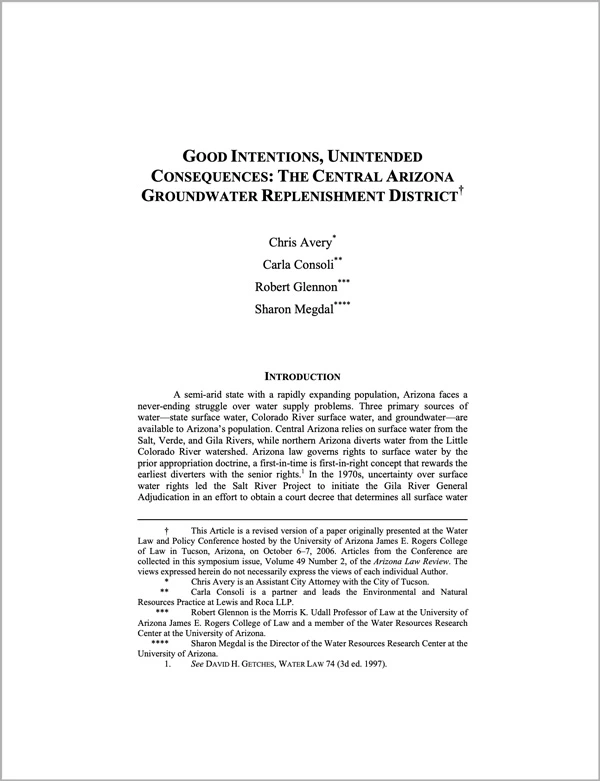
A semi-arid state with a rapidly expanding population, Arizona faces a never-ending struggle over water supply problems. Three primary sources of water—state surface water, Colorado River surface water, and groundwater—are available to Arizona’s population. Central Arizona relies on surface water from the Salt, Verde, and Gila Rivers, while northern Arizona diverts water from the Little Colorado River watershed. Arizona law governs rights to surface water by the prior appropriation doctrine, a first-in-time is first-in-right concept that rewards the earliest diverters with the senior rights.1 In the 1970s, uncertainty over surface water rights led the Salt River Project to initiate the Gila River General Adjudication in an effort to obtain a court decree that determines all surface water rights to the Gila River and its tributaries.2 Thirty-five years later, the Adjudication Court recently received a proposed settlement of the rights of the major players in the Gila River Adjudication.3 Uncertainty remains: the Adjudication has settled few rights even as it has consumed tens of millions of dollars in attorneys’ and consultants’ fees. One thing is certain: The prior appropriation claims filed with the Adjudication Court vastly exceed the amount of surface water available.

